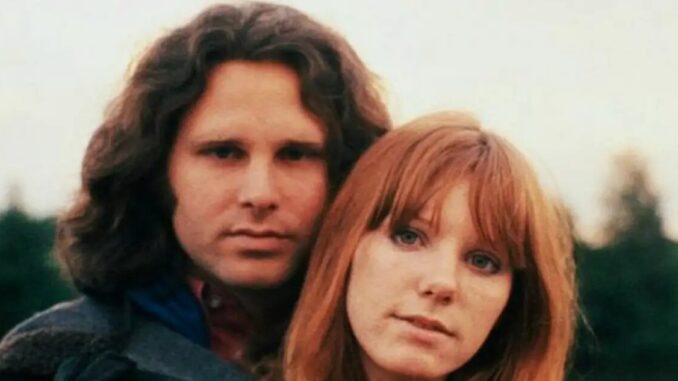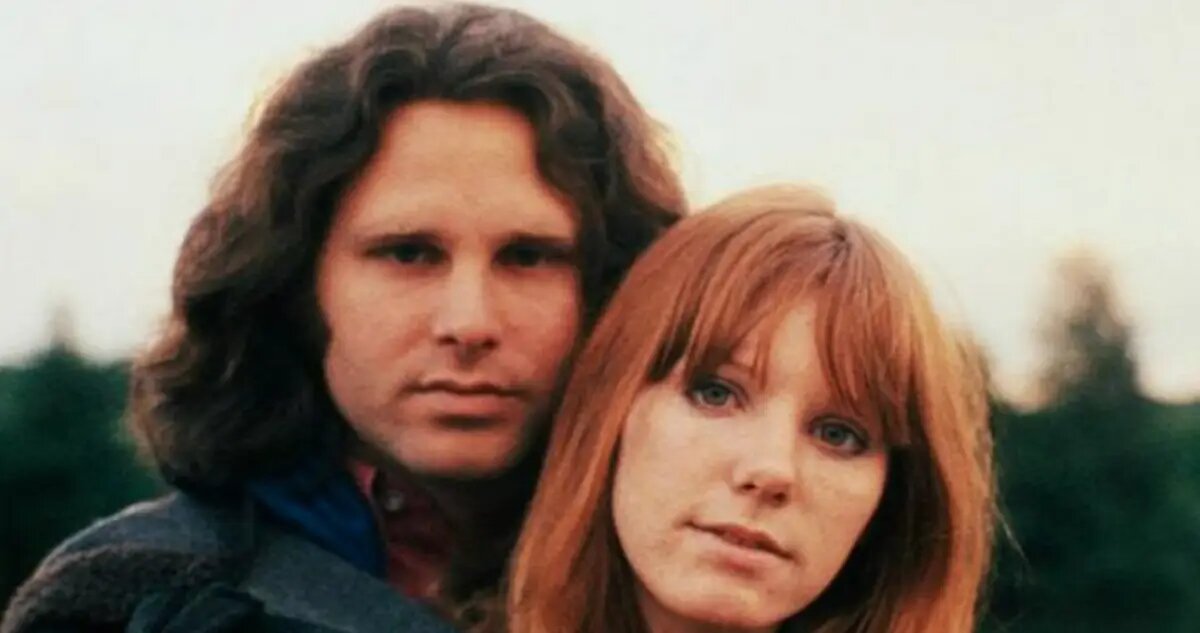
Did This French Aristocrat Have a Hand in the Deaths of Jim Morrison, Janis Joplin and Other ’60s Icons?
Jim Morrison’s death spawned a dizzying array of conspiracy theories, but Count Jean de Breteuil features in many
Twenty-seven-year-old Jim Morrison was found dead in the bathtub of his Paris apartment in the early morning hours of July 3, 1971. Beyond those few facts, little else is agreed upon. A French medical examiner ruled that a heart attack ended the life of the Doors frontman, but no autopsy was ever performed. Half a century later, fans continue to question the official story. Morrison’s death has become the rock ‘n’ roll equivalent of the JFK assassination, spawning a dizzying array of legends that mix fact and myth. Finding the truth at the heart of these wildly divergent tales becomes less possible with each passing year, but amidst the confusion and misinformation, one man’s name appears with startling regularity.
Count Jean de Breteuil is a shadowy figure about which little is known. To some, he was a handsome jet-setting playboy who squandered his life of luxury. To others, he was the snake that slithered into the ’60s Garden of Eden. By most accounts, the self-styled “dealer to the stars” pandered to the vices of the rich and famous, enabling the addictions that cost many their lives. Despite his oversized role in rock history, he’s been reduced to a footnote due to a code of secrecy that surrounded music’s elite and the premature demise of many key players. His own death in 1972 at the age of 22 marked the end of a truly unusual life — simultaneously charmed and cursed.

He was born in 1949 to an aristocratic Parisian family who owned the majority of French newspapers in francophone North Africa. Following the death of his father in 1960, young Breteuil stood to inherit a substantial fortune and a title, making him the latest Count de Breteuil in a lineage that stretched back over 500 years. “He was a handsome and communicative guy,” an associate recalled in the Spanish publication El País, “He belonged to a circle of bohemian boys from well-to-do families who smoked hashish, took LSD, and traveled to India. They could afford it.” His father’s business interests in Africa put Breteuil in contact with operatives at the Moroccan embassy, through which he reportedly began trafficking drugs — first hashish and eventually heroin.
After selling to high-society figures in Paris and London, Breteuil relocated to California in 1967. Enrolled at UCLA, his studies were little more than a cover for his illicit activities. “He had bribed the driver for the Moroccan consulate in LA to bring the diplomatic mail to his apartment in Westwood before bringing it to the embassy,” Roger Steffens, who was acquainted with Breteuil, claims to PEOPLE. “There was usually a pound or two of hashish in there, and he was feeding hash to the entire campus of UCLA.”
It was likely around this time that Breteuil met Pamela Courson. Though in the midst of her tempestuous (and reportedly open) long-term relationship with Morrison, she was captivated by Breteuil’s noble background and loved the idea of dating what she loftily called “real French royalty.” On Breteuil’s arm, Courson gained entry to the fabulously wealthy French consular crowd, a coterie of exquisitely dressed beautiful people flying high on Lear Jets and the drugs stashed in their diplomatic pouches. Together, she and Breteuil took trips abroad, purchasing exotic fabrics and materials to stock Themis, the clothing store Morrison had bought her.
The Doors singer was less than impressed by his rival for Courson’s affections. His 1968 song “Love Street,” is said to reference Courson’s shopping excursions with Breteuil, whom he loathed: “She has robes and she has junkies, lazy diamond-studded flunkies.” (He changed “junkies” to “monkeys” in the final version.) Tensions mounted as Courson began sampling Breteuil’s deadly wares. Morrison hated heroin, and his burgeoning alcoholism shortened his temper. Shouting matches were frequent between the two. Courson usually stormed out, often finding solace with Breteuil.
She traveled with him to Marrakesh, the Moroccan haven for high-class hippies like the Rolling Stones, Jimi Hendrix and Graham Nash. Together they stayed at Villa Taylor, the Breteuils’ spacious family home in the European quarter just outside the ancient city walls. Built in the ’20s by a granddaughter of President Ulysses S. Grant, the Moorish estate had hosted the likes of Charlie Chaplin and Yves Saint Laurent. Franklin Roosevelt and Winston Churchill stayed at Villa Taylor during the Second World War, when the house served as the city’s American headquarters. Churchill was so entranced by the sunset over the Atlas Mountains that he had his staff carry the wheelchair-bound FDR to the top of the property’s five-story tower to see for himself. By the time Courson arrived at Villa Taylor some 25 years later, Churchill’s painting of the vista — the only artwork he completed during the war — hung in the sitting room.
These visits to Morocco allowed Breteuil to collect unusually potent heroin, which he dispensed to his high-profile clients in Los Angeles. One of these may have been Janis Joplin, who was found dead of a heroin overdose in her room at the Landmark Hotel on October 4, 1970.
According to Mercy Fontenot (a.k.a Miss Mercy) of the pioneering all-female rock band the GTOs, Breteuil dropped by shortly after selling Joplin her fatal dose. “Jean came to visit me, bringing me the same heroin he had just given Janis,” she claims in her 2021 memoir, Permanent Damage, “He wanted to test the smack on me, basically use me as his guinea pig…But as soon as he shot me up, I knew something had gone very wrong.” As she felt herself slipping into drugged unconsciousness, Breteuil revived her with a blast of cocaine, known to counteract the effects of opioids. Joplin was not so lucky.
“Neither of us knew at the time that Janis would overdose from this same batch of heroin,” Fontenot continues. “Jean left the smack with me, but it was so strong, I couldn’t handle it.” She says she gave the remaining heroin to musician Gram Parsons, who shared with a friend. The friend nearly overdosed. (Parsons himself would fatally OD in 1973.)
That weekend, nine people across Los Angeles died from nearly pure heroin. Joplin was one of them. “When I heard the news on the radio, I said, ‘Oh, yikes. Whoops.’ It was very sad. Janis was only two blocks away from me,” Fontenot added. “Jean was seriously freaked out. I know he did not mean for that to happen to Janis.” There were whispers throughout the underground that someone had gotten sloppy. No responsible dealer would spread that kind of uncut junk without diluting it, or at least warning customers.
Having abandoned his studies at UCLA, Breteuil’s status as an “illegal alien” would compound any judicial wrath if the police linked him to Joplin’s death. In terror, he fled to Paris. Courson accompanied him. She left a note for Morrison, which he supposedly burned upon reading at her request. Doubly troubled by the death his fellow rock comrade and the departure of his girlfriend, he drowned his sorrows at Barney’s Beanery, an infamous Hollywood watering hole where Joplin had enjoyed her last meal. As Morrison’s friends mourned the loss of Joplin and the recently departed Jimi Hendrix, he was heard to mutter, “You’re drinking with number three.”
Courson returned to Los Angeles in December 1970. Morrison was busy recording L.A. Woman, the final album the Doors owed their label before their contract was up. With Morrison now a free agent, the couple decided to settle in Paris. The move was intended as fresh start. Fed up with the show business rat race, Morrison could leave behind the noxious influences of Los Angeles and reconnect with his muse in the City of Light. That was the theory, at least. According to one report, Courson told Morrison she was going to Paris with or without him.
She left on Valentine’s Day 1971. Morrison would follow weeks later when work on L.A. Woman was complete. Alone in Paris, Courson is said to have hooked up with Breteuil and sank into the city’s heroin underworld. Before long, she was using daily.

With assistance from Breteuil, she found a well-appointed three-bedroom sublet for Morrison at 17 Rue Beautreillis in the fashionable bohemian district known as Le Marais. Despite the spacious accommodations, Courson initially kept her own address. Her five-year relationship with Morrison was so combustible that they had mostly lived separately. When she finally moved into 17 Rue Beautreillis, Breteuil and his clique of wealthy addicts were regular guests. Morrison would make himself scare upon their arrival, retreating to the opposite end of the apartment as they snorted lines of fluffy pink “Cotton Candy,” an especially potent variety of heroin that had recently arrived from the Far East.
A major trafficking hub, Paris in 1971 was awash with exceptionally pure heroin smuggled into the country through the port city of Marseilles — the famous “French Connection” immortalized in William Friedkin’s Oscar-winning film of the same name. Shortly before Morrison’s death, he pored over the Newsweek cover story “The Heroin Plague,” which traced the abnormally high number of overdoses across Europe and the United States. The magazine issue was dated July 5, 1971. Morrison wouldn’t live to see that date.

Leave a Reply